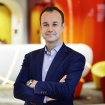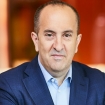Due diligence involves close scrutiny of a company’s current condition, identifying the opportunities and risks involved in a planned capital transaction. Proper due diligence enables a potential investor not only to objectively evaluate a company’s condition, but also to plan out the right investment timeline.
We offer:
- due diligence on the buyer’s side – a financial review questioning the sense of the financial, organizational and strategic tenets under which the company operates
- due diligence at the seller’s request – presenting an analysis of issues and problems from the perspective of potential buyers. Provides solutions that help dispose of assets efficiently and effectively
- market-review due diligence – helps strategic investors and private equity funds to gain an in-depth understanding of companies’ current and forecast financial results
- tax due diligence – helps companies to improve tax efficiency through developing new tax models and investment scenarios, managing tax risks and identifying the best tax-related opportunities concerning stock exchange activities





